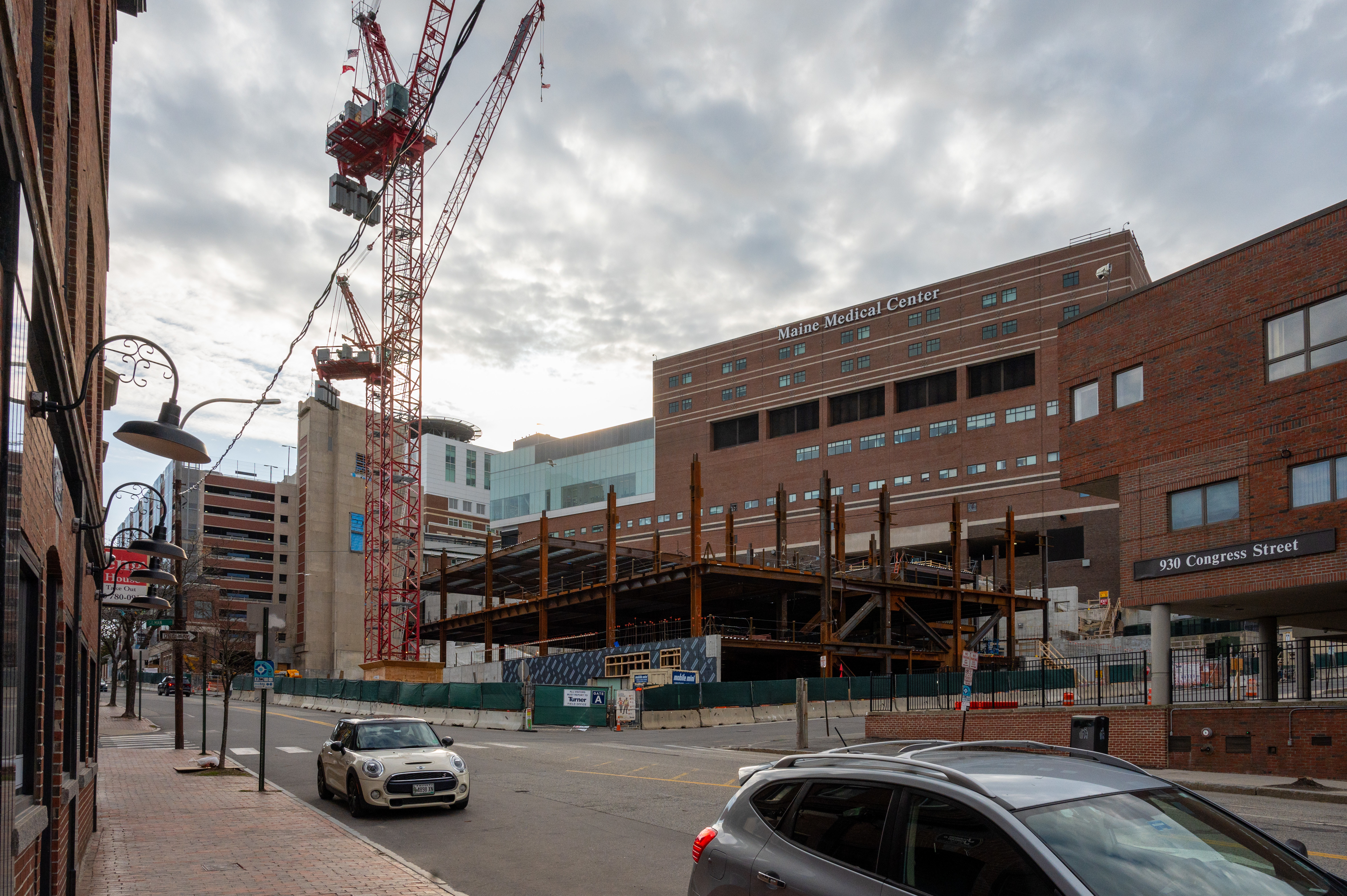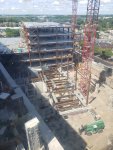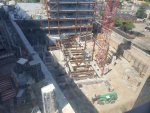Even pilots unfamiliar with the helipads at Maine Med will notice the red safety lights mounted to the cranes' tops, no?Yes, they are all LifeFlight of Maine and they arrive from the north (Lewiston, Augusta, and Bangor, primarily). All of these pilots know exactly what is happening at Maine Medical Center. Others, or pilots from other places, probably do not. That is the point that I am making here. Maine Medical is a top tier hospital now, and it is conceivable that other EMS companies outside of Maine could bring someone from the south or west-to Maine. It is also a hospital that can be used for emergencies by the military. All that I am implying here is that the hospital should be proactive with this type of scenario. And EMS pilots are trained to land on highways, for the obvious of reasons. Roadways are all around us, so the approach to the hospital can be from anywhere. "To err is human, to forgive divine." Alexander Pope (not a pilot).
You are using an out of date browser. It may not display this or other websites correctly.
You should upgrade or use an alternative browser.
You should upgrade or use an alternative browser.
Maine Medical Center Expansion | Portland
- Thread starter Max
- Start date
TC_zoid
Senior Member
- Joined
- Apr 16, 2014
- Messages
- 1,233
- Reaction score
- 1,886
Even pilots unfamiliar with the helipads at Maine Med will notice the red safety lights mounted to the cranes' tops, no?
Yes, they will see those lights, but not necessarily in bad weather. As you know, Portland is known for its relatively fast roll-in fog. That's how the Kobe Bryant crash happened, and the one with the single pilot in Manhattan on a building's rooftop in June of 2019. But the NYC one was 100% the pilot's fault. The director of the heliport and the primary ramp agent both passionately tried to convince him not to take off, or from what they told me. A life-saving EMS flight is different. They have to take more chances. I love that Maine Med has two helipads at the top, as the entire nationwide EMS services operates with such heroics. Landing on freeways and parking lots involves avoiding power lines and other obstacles, and those are much harder to see, especially at night.
I wonder the reason why they didn't opt for a variety of hammerhead tower crane - maybe the turning radius given the parking garage and close proximity of both cranes? Why not install one lower profile hammerhead in the middle and sacrifice schedule for pilot safety?
TC_zoid
Senior Member
- Joined
- Apr 16, 2014
- Messages
- 1,233
- Reaction score
- 1,886
Good question. That second picture you posted, the wide shot, shows the crane tips reaching above the helipad surfaces.I wonder the reason why they didn't opt for a variety of hammerhead tower crane - maybe the turning radius given the parking garage and close proximity of both cranes? Why not install one lower profile hammerhead in the middle and sacrifice schedule for pilot safety?
DanielPWM19
Active Member
- Joined
- Aug 21, 2020
- Messages
- 426
- Reaction score
- 705
LOL ... this conversation is hilarious.
markhb
Senior Member
- Joined
- Oct 19, 2013
- Messages
- 1,391
- Reaction score
- 1,175
That's some seriously lurid text from the Gray Lady! I can only imagine how the Daily News and Post covered it. Thanks for the info.In 1977 everything changed from "the accident" (see link below). Since then, there are no helicopter landings on building rooftops in New York City--even hospitals. NYU Hospital is across the street from the East 34th St. Heliport, or the one I am most familiar with. But only organs for transplants are allowed at this heliport. It's strange, but I don't think that there are any patients helicoptered into Manhattan, or to my knowledge, anyway. The metro area has good hospitals, so that's probably the reason. The accident kind of freaked the city out. Read the article from the NY Times link and you will understand.
https://www.nytimes.com/1977/05/17/...m-building-throws-rotor-blade-one-victim.html
WormtownNative
Active Member
- Joined
- Dec 7, 2014
- Messages
- 499
- Reaction score
- 260
Yes, they are all LifeFlight of Maine and they arrive from the north (Lewiston, Augusta, and Bangor, primarily). All of these pilots know exactly what is happening at Maine Medical Center. Others, or pilots from other places, probably do not. That is the point that I am making here. Maine Medical is a top tier hospital now, and it is conceivable that other EMS companies outside of Maine could bring someone from the south or west-to Maine. It is also a hospital that can be used for emergencies by the military. All that I am implying here is that the hospital should be proactive with this type of scenario. And EMS pilots are trained to land on highways, for the obvious of reasons. Roadways are all around us, so the approach to the hospital can be from anywhere. "To err is human, to forgive divine." Alexander Pope (not a pilot).
Yes, they will see those lights, but not necessarily in bad weather. As you know, Portland is known for its relatively fast roll-in fog. That's how the Kobe Bryant crash happened, and the one with the single pilot in Manhattan on a building's rooftop in June of 2019. But the NYC one was 100% the pilot's fault. The director of the heliport and the primary ramp agent both passionately tried to convince him not to take off, or from what they told me. A life-saving EMS flight is different. They have to take more chances. I love that Maine Med has two helipads at the top, as the entire nationwide EMS services operates with such heroics. Landing on freeways and parking lots involves avoiding power lines and other obstacles, and those are much harder to see, especially at night.
Helicopter EMS is a different animal from general aviation. HEMS Pilots will evaluate the weather before they take off - not just at their starting location and destination, but also areas in-between. If it's not safe, they won't fly, period. Also, without knowing the specifics, the helipad likely has designated approaches, which would reduce the risk of the crane interfering. (If you want to go down the safety rabbit hole, the FAA just completed a study comparing fatal HEMS accidents to other fatal Helicopter crashes, results of the study start on page 14. More reading can also be found in this study as well.).
Just a friendly lurker that is a 911 Dispatcher and has friends that work in the field down here in Mass.
TC_zoid
Senior Member
- Joined
- Apr 16, 2014
- Messages
- 1,233
- Reaction score
- 1,886
All helicopter pilots, or the ones that I know, seriously evaluate weather before they take off. Two of the pilots I followed during that year of filming became EMS pilots, one in NJ and the other Texas. Fog in coastal Maine can be somewhat unpredictable. Weather can be unpredictable. EMS pilots are human, and humans make mistakes (and 911 Dispatchers too). Two cranes next to and rising above two helipads is possibly a threat to safety (they are not static, like a building is). No? The chances they take are primarily in the landings--in good weather--as in parking lots and freeways. One of them posted a picture on her Instagram page not long ago, having landed on a busy freeway--her first. Everyone takes risks, though mostly calculated. I find it hard to accept that a serious injury in need of helicopter EMS could never happen if there was a "slight chance" of bad weather. I still talk with several notable pilots, and charter-sightseeing company owner/aviators, along with the director of one of the busiest heliports in the world (and now a close friend). I get the unexpurgated information, of which the Gov does not, or would not publish.Helicopter EMS is a different animal from general aviation. HEMS Pilots will evaluate the weather before they take off - not just at their starting location and destination, but also areas in-between. If it's not safe, they won't fly, period. Also, without knowing the specifics, the helipad likely has designated approaches, which would reduce the risk of the crane interfering. (If you want to go down the safety rabbit hole, the FAA just completed a study comparing fatal HEMS accidents to other fatal Helicopter crashes, results of the study start on page 14. More reading can also be found in this study as well.).
Just a friendly lurker that is a 911 Dispatcher and has friends that work in the field down here in Mass.
Last edited:
Dr. StrangeHat
Active Member
- Joined
- Sep 13, 2012
- Messages
- 812
- Reaction score
- 931
There is no way an insurance underwriter would sign off on this if the risk was too high. Is it without risk? Of course not. The risk isn't 0%, but it isn't 100%, either, and it's closer to 0% than it is to 100%. I'm certain every company that could potentially fly a helicopter to Maine Med's helipad has been made fully aware of the situation and necessary flight path. A helipad has similar operating procedures as any airport, and there is an ATIS broadcast for the helipad that all pilots must listen to before the even leave the ground to head to that destination. The ATIS broadcast includes all current relevant information, including current weather conditions, possible weather conditions that day, approach patterns, landing procedures, taxi procedures, etc. The pilots are in constant contact with air traffic controllers, who can update them in real time on weather conditions at the helipad. An air traffic controller in the tower at the jetport can also easily see the visual conditions at the helipad. There are sensors at the helipad to report conditions, and they can quickly reach the hospital if a visual inspection of conditions at the helipad are needed.
I know for a fact that Lifeflight and other carriers have an alternate landing location at the jetport if there are safety concerns with the helipad (i.e. wind, ice, snow, fog, heavy rain, thunderstorms, etc.). If they have to divert, there are procedures for an ambulance to be waiting for them at the jetport when they land.
Of course human error is also possible with any flight, be that helicopter or airplane or hot air balloon, but as an insurance underwriter myself, I am certain the risk has been evaluated thoroughly, factoring in all of the safety procedures in place, concerns over rapid weather changes , and even the potential for human error by a pilot and/or crane operator.
I know for a fact that Lifeflight and other carriers have an alternate landing location at the jetport if there are safety concerns with the helipad (i.e. wind, ice, snow, fog, heavy rain, thunderstorms, etc.). If they have to divert, there are procedures for an ambulance to be waiting for them at the jetport when they land.
Of course human error is also possible with any flight, be that helicopter or airplane or hot air balloon, but as an insurance underwriter myself, I am certain the risk has been evaluated thoroughly, factoring in all of the safety procedures in place, concerns over rapid weather changes , and even the potential for human error by a pilot and/or crane operator.
Portlander
Senior Member
- Joined
- Apr 14, 2010
- Messages
- 2,544
- Reaction score
- 5,524
Portlander
Senior Member
- Joined
- Apr 14, 2010
- Messages
- 2,544
- Reaction score
- 5,524
markhb
Senior Member
- Joined
- Oct 19, 2013
- Messages
- 1,391
- Reaction score
- 1,175
I was just looking at the images again, and started wondering about how tight and twisty that vehicle entry off Congress appears to be. That sent me to the City's website to look at the plans, and those aren't on the Self Service portal, which in turn got me to looking for the Planning Board packet from 12/17/18 when they had the public hearing... and wouldn't you know, that one meeting's packet appears to be missing? (It's Plan PL-000331-2018 on the CSS site but there are no detailed plans.)
markhb
Senior Member
- Joined
- Oct 19, 2013
- Messages
- 1,391
- Reaction score
- 1,175
Thanks! Yeah, it does look tight and twisty; we'll see how it turns out.Building permits are on the CSS site and have the most up-to-date info in them. Search for "BLDC2020-01426":
Looks like they are down to one tower crane - they took down the one that was situated on Congress, leaving the one that is in the middle of the building. There's still plenty of steel to go, but I can't imagine that crane lasts too much longer either. I guess they'll just do the rest with a mobile crane?
Bonus Life Flight of Maine cameo
 Maine Medical Center Hospital Expansion Congress Street Construction by Corey Templeton, on Flickr
Maine Medical Center Hospital Expansion Congress Street Construction by Corey Templeton, on Flickr
 Maine Medical Center Hospital Expansion Congress Street Construction by Corey Templeton, on Flickr
Maine Medical Center Hospital Expansion Congress Street Construction by Corey Templeton, on Flickr

 Maine Medical Center Expansion Construction Congress Street
Maine Medical Center Expansion Construction Congress Street

